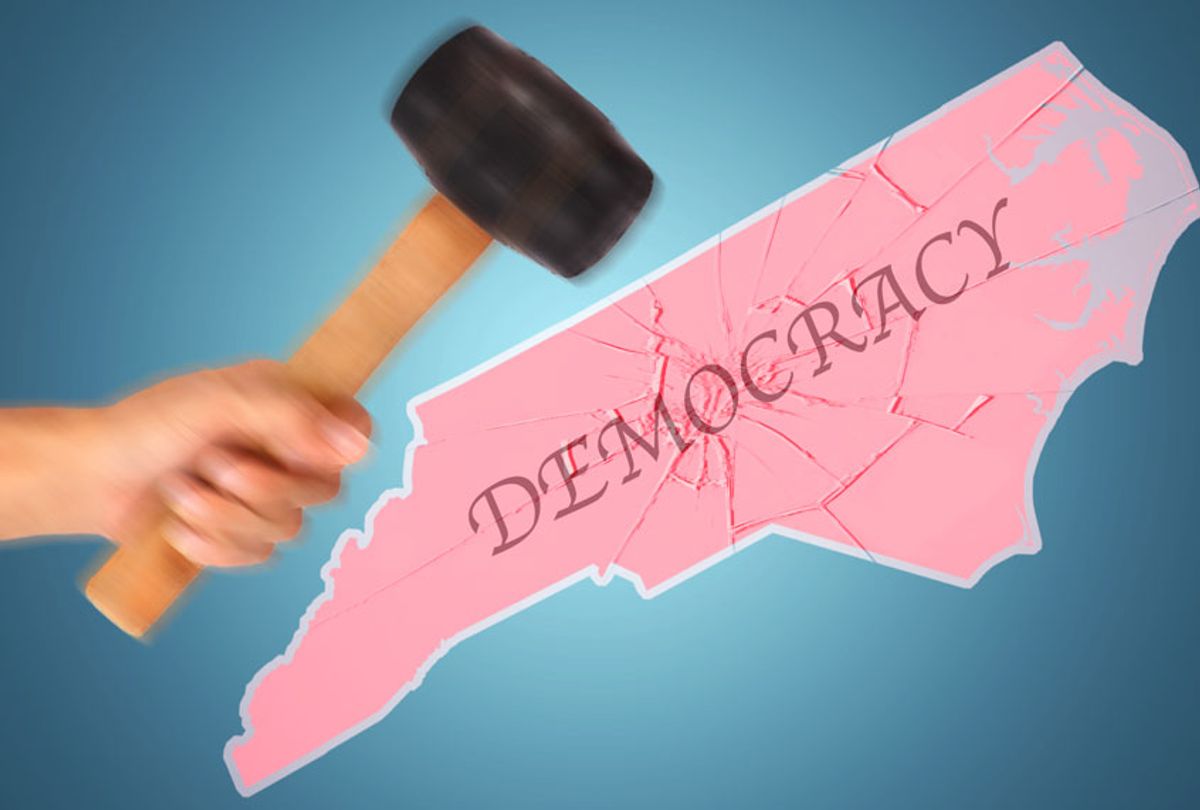George White of North Carolina served two terms in Congress between 1897 and 1901. He was the only Black member during those years, and he would be the last Black person elected to the U.S. House for nearly another three decades.
North Carolina Democrats made certain of that. A new state constitutional amendment, ratified in 1900, required passage of a literacy and education test before registering to vote, as well as pre-payment of a poll tax. By 1904, the number of registered Black voters in North Carolina had plummeted to nearly zero.
But even when the Voting Rights Act put an end to such blatant racist voter suppression, whites kept control through more subtle, though no less insidious means. District lines were gerrymandered to prevent Black voters from becoming a powerful enough political force to have any meaningful voice in their own representation.
That worked as well: It would be decades longer — not until Rep. Eva Clayton, in 1992 — until North Carolina would send another Black representative to Washington.
The 1982 reauthorization of the Voting Rights Act, which required the creation of majority-minority districts where possible, helped make Clayton's victory possible. Yet it too would quickly be refashioned, this time by Southern Republicans, into a tool that favored white voters. Republican map makers quickly realized that the creation of new districts that placed a majority of Black voters — most of them Democratic voters — into one seat would hand the GOP an advantage in all the surrounding seats.
The GOP had figured out a loophole: They could look like champions of inclusion and increase the number and representation of Blacks in Congress while decreasing the number of Democrats.
Before the 1990s, Southern Democrats diluted the power of the Black vote by scattering us across many districts. Starting in 1991, Republicans packed Black voters into overwhelmingly Black districts, whether in North Carolina or others, like the 14th in Michigan, artfully designed via a thin line to link the poorest neighborhoods in Detroit with the city of Pontiac, 30 miles north, while boosting the GOP's prospects in all the surrounding districts.
Too often, the Black power structure, enticed by a permanently safe seat in Congress, went along.
Indeed, by 1994, the Congressional Black Caucus had more members than at any time since Reconstruction. And not coincidentally, Republicans took control of the House for the first time in five decades.
Here's what really made this brazen trickery possible: Single-member congressional districts. When representatives are elected in this fashion, the district lines determine winners and losers. It's easy for Black voters — who already live close together after decades of racist banking and housing practices known as "redlining" — to be drawn into districts that are 80 or 85 percent Black. But this limits Black voting power. It puts a ceiling on the number of districts that might elect Black representatives, or where Black residents might have a greater voice. And at a time when so many Blacks align with the Democratic Party, it ends up handing Republicans an enduring advantage in the race for Congress.
It's time for a reform that increases the political power of Black voters. The Fair Representation Act, which will be reintroduced by Rep. Don Beyer of Virginia later this month, would put an end to the single-member districts that so often segregate Black voters. Instead, we would elect members of Congress from somewhat larger districts of three, four and five members, using ranked choice voting.
The larger districts would take away the power of district lines to pack Blacks into a handful of seats. Ranked choice voting, meanwhile, would lower the percentage of votes needed to elect a member and create fairer and more representative congressional delegations in every state. Michigan, for example, is nearly 15 percent Black — but there is only one Black member of Congress, representing the 14th district, who tends to win with more than 80 percent of the vote.
Indeed, if we had multi-member voters and ranked choice voting, studies show that minority representation would soar in all parts of the country.
We've seen two different futures for America in recent months. Last summer, millions of Americans marched for social justice and proclaimed that Black Lives Matter in the face of systemic racism and police violence. Then, on Jan. 6, insurrectionists mobbed the Capitol, halting the Electoral College count that symbolizes our peaceful transfer of power.
As we look to 2021 as a year of promise and reform, we should remember George White and redouble our efforts to choose the vision that's inclusive and promising. That America is within our grasp. We simply need elections that make a true multiracial democracy possible.



Shares